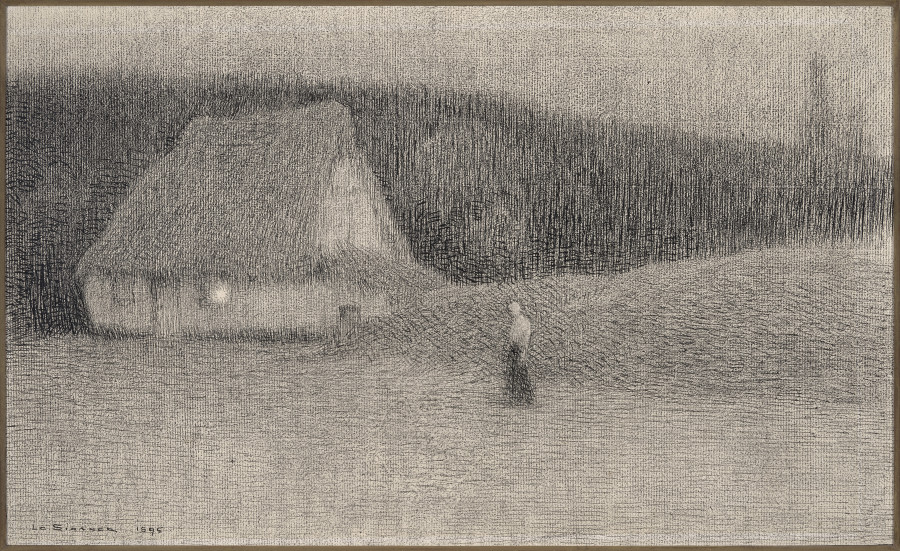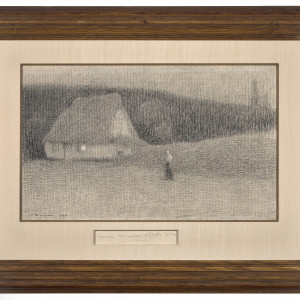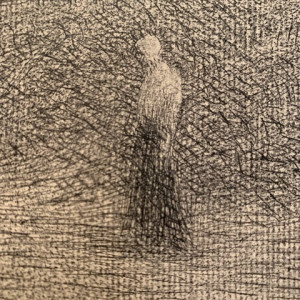Le Sidaner has been called a Post-Impressionist, a Fauvist, a Symbolist and a Pointillist, and here a comparison with Seurat’s black-and-white drawings a decade earlier is valid. Like Seurat, Le Sidaner explores the visual effects of light and shadow through an incalculable zigzag of strokes and dashes of a conté crayon. The effect is a sense of serenity and calm, where the whole becomes the sum of its non-competing parts.
Provenance
James W. Alsdorf, Chicago until 1955
Gifted to Topeka Public Library
Deaccessioned from Topeka Library in the 1970s
Dr. Cotter Hirshberg
Thence by descent
Catalogue note
When Henri Le Sidaner realized the traditional path of Academic training was not for him, he left Alexandre Cabanel’s Paris studio, where he had been a student at the École des Beaux-Arts and departed for Etaples in 1882. This small seaside village on the Pas-de-Calais became home for Le Sidaner for the next several years. The coastal setting, with its sun-washed dunes had also inspired Charles François Daubigny and Eugène Boudin in their quest to pursue plein-air painting. Le Sidaner was also interested in the local peasants and the countryside, which provided further inspiration for his paintings and drawings.
Our drawing, inscribed Chaumier aux environs d’Etaples, Le Soir and dated 1895 shows one of the thatched cottages outside the village. It is evening, perhaps twilight, judging from the brightest spot in the drawing – the candlelit window. A single peasant returns home and emphasizes the intimacy of the scene, perhaps echoing the solitude Le Sidaner himself found in Etaples. Le Sidaner has been called a Post-Impressionist, a Fauvist, a Symbolist and a Pointillist, and here a comparison with Seurat’s black-and-white drawings a decade earlier is valid. Like Seurat, Le Sidaner explores the visual effects of light and shadow through an incalculable zigzag of strokes and dashes of a conté crayon. The effect is a sense of serenity and calm, where the whole becomes the sum of its non-competing parts.
Le Sidaner had painted the same cottage scene two years earlier using what can only be described as a Fauvist palette (Museo Nacional Thyssen-Bornemisza, Madrid).








